2N3819 JFET: Substitute, Pinout and Datasheet
RF JFET Transistors N-CH -25V 10mA BULK
Hello everyone, this is Rose. In today's post, we will detail the introduction to 2N3819. 2N3819 is a a TO-92 packaged N-Channel JFET designed for RF amplifier and mixer applications.This article mainly introduce substitute, pinout, datasheet and other detailed information about Central Semiconductor 2N3819.

Drain characteristic curve and Dc transfer curve test for 2N3819(or any kind of JFET)
2N3819 Description
The Central Semiconductor 2N3819 is a a TO-92 packaged N-Channel JFET designed for RF amplifier and mixer applications.
The transistor possesses some very good features like very low noise and distortion, high gain and sensitivity, quality signal amplification and can also be used for very low level signal amplification.
Other than that it can also be used as a switch. When used as a switch it is capable of fast switching and can drive loads that falls under 10mA. It also provides high gain at 100MHz.
2N3819 Pinout

2N3819 CAD Model
Symbol

Footprint
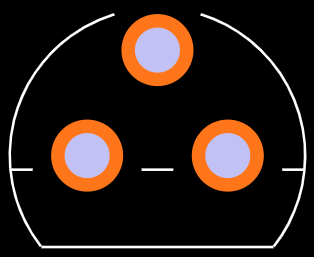
3D Model
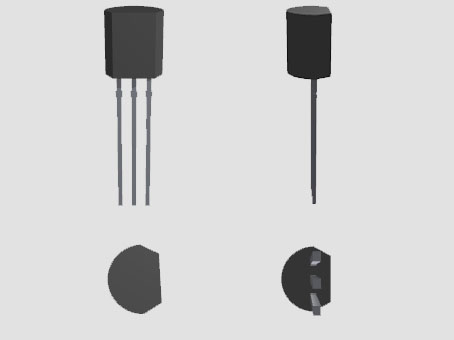
2N3819 Features
■Type: JFET - N - Channel - Depletion
■Drain to Source Voltage (VDS) = 25V
■Drain to Gate Voltage (VDG) = 25V
■Gate to Source Voltage (VGS) = 25V
■Drain Current (ID)= 0.1 A
■Gate-Source Cut-off Voltage (VGS(off)) = -8.0 Vdc (VDS = 15 Vdc, ID = 10 nAdc)
■Cut-off Frequency (Note 1) = 700 Mhz (VDS = 15 Vdc, VGS = 0)
■Power Dissipation (Ptot): 350mW
■Package Type: TO-92
■Transistor Type: N Channel
■Max Storage & Operating temperature Should Be: -65 to +150 Centigrade
■Low Noise & High Gain
Specifications
- TypeParameter
- Factory Lead Time6 Weeks
- Package / Case
refers to the protective housing that encases an electronic component, providing mechanical support, electrical connections, and thermal management.
TO-226-3, TO-92-3 (TO-226AA) - Surface Mount
having leads that are designed to be soldered on the side of a circuit board that the body of the component is mounted on.
NO - Weight453.59237mg
- Transistor Element Material
The "Transistor Element Material" parameter in electronic components refers to the material used to construct the transistor within the component. Transistors are semiconductor devices that amplify or switch electronic signals and are a fundamental building block in electronic circuits. The material used for the transistor element can significantly impact the performance and characteristics of the component. Common materials used for transistor elements include silicon, germanium, and gallium arsenide, each with its own unique properties and suitability for different applications. The choice of transistor element material is crucial in designing electronic components to meet specific performance requirements such as speed, power efficiency, and temperature tolerance.
SILICON - Number of Elements1
- Operating Temperature (Max.)150°C
- Packaging
Semiconductor package is a carrier / shell used to contain and cover one or more semiconductor components or integrated circuits. The material of the shell can be metal, plastic, glass or ceramic.
Bulk - Published2001
- JESD-609 Code
The "JESD-609 Code" in electronic components refers to a standardized marking code that indicates the lead-free solder composition and finish of electronic components for compliance with environmental regulations.
e0 - Pbfree Code
The "Pbfree Code" parameter in electronic components refers to the code or marking used to indicate that the component is lead-free. Lead (Pb) is a toxic substance that has been widely used in electronic components for many years, but due to environmental concerns, there has been a shift towards lead-free alternatives. The Pbfree Code helps manufacturers and users easily identify components that do not contain lead, ensuring compliance with regulations and promoting environmentally friendly practices. It is important to pay attention to the Pbfree Code when selecting electronic components to ensure they meet the necessary requirements for lead-free applications.
no - Part Status
Parts can have many statuses as they progress through the configuration, analysis, review, and approval stages.
Active - Moisture Sensitivity Level (MSL)
Moisture Sensitivity Level (MSL) is a standardized rating that indicates the susceptibility of electronic components, particularly semiconductors, to moisture-induced damage during storage and the soldering process, defining the allowable exposure time to ambient conditions before they require special handling or baking to prevent failures
1 (Unlimited) - Number of Terminations3
- ECCN Code
An ECCN (Export Control Classification Number) is an alphanumeric code used by the U.S. Bureau of Industry and Security to identify and categorize electronic components and other dual-use items that may require an export license based on their technical characteristics and potential for military use.
EAR99 - Terminal Finish
Terminal Finish refers to the surface treatment applied to the terminals or leads of electronic components to enhance their performance and longevity. It can improve solderability, corrosion resistance, and overall reliability of the connection in electronic assemblies. Common finishes include nickel, gold, and tin, each possessing distinct properties suitable for various applications. The choice of terminal finish can significantly impact the durability and effectiveness of electronic devices.
Tin/Lead (Sn/Pb) - HTS Code
HTS (Harmonized Tariff Schedule) codes are product classification codes between 8-1 digits. The first six digits are an HS code, and the countries of import assign the subsequent digits to provide additional classification. U.S. HTS codes are 1 digits and are administered by the U.S. International Trade Commission.
8541.21.00.95 - Max Power Dissipation
The maximum power that the MOSFET can dissipate continuously under the specified thermal conditions.
360mW - Terminal Position
In electronic components, the term "Terminal Position" refers to the physical location of the connection points on the component where external electrical connections can be made. These connection points, known as terminals, are typically used to attach wires, leads, or other components to the main body of the electronic component. The terminal position is important for ensuring proper connectivity and functionality of the component within a circuit. It is often specified in technical datasheets or component specifications to help designers and engineers understand how to properly integrate the component into their circuit designs.
BOTTOM - Terminal Form
Occurring at or forming the end of a series, succession, or the like; closing; concluding.
THROUGH-HOLE - Peak Reflow Temperature (Cel)
Peak Reflow Temperature (Cel) is a parameter that specifies the maximum temperature at which an electronic component can be exposed during the reflow soldering process. Reflow soldering is a common method used to attach electronic components to a circuit board. The Peak Reflow Temperature is crucial because it ensures that the component is not damaged or degraded during the soldering process. Exceeding the specified Peak Reflow Temperature can lead to issues such as component failure, reduced performance, or even permanent damage to the component. It is important for manufacturers and assemblers to adhere to the recommended Peak Reflow Temperature to ensure the reliability and functionality of the electronic components.
NOT SPECIFIED - Reach Compliance Code
Reach Compliance Code refers to a designation indicating that electronic components meet the requirements set by the Registration, Evaluation, Authorization, and Restriction of Chemicals (REACH) regulation in the European Union. It signifies that the manufacturer has assessed and managed the chemical substances within the components to ensure safety and environmental protection. This code is vital for compliance with regulations aimed at minimizing risks associated with hazardous substances in electronic products.
not_compliant - Time@Peak Reflow Temperature-Max (s)
Time@Peak Reflow Temperature-Max (s) refers to the maximum duration that an electronic component can be exposed to the peak reflow temperature during the soldering process, which is crucial for ensuring reliable solder joint formation without damaging the component.
NOT SPECIFIED - Pin Count
a count of all of the component leads (or pins)
3 - JESD-30 Code
JESD-30 Code refers to a standardized descriptive designation system established by JEDEC for semiconductor-device packages. This system provides a systematic method for generating designators that convey essential information about the package's physical characteristics, such as size and shape, which aids in component identification and selection. By using JESD-30 codes, manufacturers and engineers can ensure consistency and clarity in the specification of semiconductor packages across various applications and industries.
O-PBCY-T3 - Qualification Status
An indicator of formal certification of qualifications.
Not Qualified - Element Configuration
The distribution of electrons of an atom or molecule (or other physical structure) in atomic or molecular orbitals.
Single - Operating Mode
A phase of operation during the operation and maintenance stages of the life cycle of a facility.
DEPLETION MODE - Power Dissipation
the process by which an electronic or electrical device produces heat (energy loss or waste) as an undesirable derivative of its primary action.
360mW - Transistor Application
In the context of electronic components, the parameter "Transistor Application" refers to the specific purpose or function for which a transistor is designed and used. Transistors are semiconductor devices that can amplify or switch electronic signals and are commonly used in various electronic circuits. The application of a transistor can vary widely depending on its design and characteristics, such as whether it is intended for audio amplification, digital logic, power control, or radio frequency applications. Understanding the transistor application is important for selecting the right type of transistor for a particular circuit or system to ensure optimal performance and functionality.
AMPLIFIER - Drain to Source Voltage (Vdss)
The Drain to Source Voltage (Vdss) is a key parameter in electronic components, particularly in field-effect transistors (FETs) such as MOSFETs. It refers to the maximum voltage that can be applied between the drain and source terminals of the FET without causing damage to the component. Exceeding this voltage limit can lead to breakdown and potentially permanent damage to the device.Vdss is an important specification to consider when designing or selecting components for a circuit, as it determines the operating range and reliability of the FET. It is crucial to ensure that the Vdss rating of the component is higher than the maximum voltage expected in the circuit to prevent failures and ensure proper functionality.In summary, the Drain to Source Voltage (Vdss) is a critical parameter that defines the maximum voltage tolerance of a FET component and plays a significant role in determining the overall performance and reliability of electronic circuits.
25V - Transistor Type
Transistor type refers to the classification of transistors based on their operation and construction. The two primary types are bipolar junction transistors (BJTs) and field-effect transistors (FETs). BJTs use current to control the flow of current, while FETs utilize voltage to control current flow. Each type has its own subtypes, such as NPN and PNP for BJTs, and MOSFETs and JFETs for FETs, impacting their applications and characteristics in electronic circuits.
N-Channel JFET - Continuous Drain Current (ID)
Continuous Drain Current (ID) is a key parameter in electronic components, particularly in field-effect transistors (FETs) such as MOSFETs. It refers to the maximum current that can flow continuously through the drain terminal of the FET without causing damage to the component. This parameter is crucial for determining the power handling capability of the FET and is specified by the manufacturer in the component's datasheet. Designers must ensure that the actual operating current does not exceed the specified Continuous Drain Current to prevent overheating and potential failure of the component.
20mA - Gate to Source Voltage (Vgs)
The Gate to Source Voltage (Vgs) is a crucial parameter in electronic components, particularly in field-effect transistors (FETs) such as MOSFETs. It refers to the voltage difference between the gate and source terminals of the FET. This voltage determines the conductivity of the FET and controls the flow of current through the device. By varying the Vgs, the FET can be switched on or off, allowing for precise control of electronic circuits. Understanding and properly managing the Vgs is essential for ensuring the reliable and efficient operation of FET-based circuits.
25V - Drain Current-Max (Abs) (ID)
The parameter "Drain Current-Max (Abs) (ID)" in electronic components refers to the maximum current that can flow from the drain to the source terminal of a field-effect transistor (FET) or a similar device. It is a crucial specification that indicates the maximum current handling capability of the component before it reaches its saturation point or gets damaged. This parameter is typically specified in amperes (A) and helps designers ensure that the component can safely handle the expected current levels in a circuit without exceeding its limits. It is important to consider this parameter when designing circuits to prevent overloading the component and ensure reliable operation.
0.02A - FET Technology
Field-Effect Transistor (FET) technology is a type of semiconductor device commonly used in electronic components such as transistors and integrated circuits. FETs operate by controlling the flow of current through a semiconductor channel using an electric field. There are several types of FETs, including Metal-Oxide-Semiconductor FETs (MOSFETs) and Junction FETs (JFETs), each with its own characteristics and applications. FET technology offers advantages such as high input impedance, low power consumption, and fast switching speeds, making it suitable for a wide range of electronic devices and circuits. Overall, FET technology plays a crucial role in modern electronics by enabling efficient and reliable signal processing and amplification.
JUNCTION - Feedback Cap-Max (Crss)
Feedback Cap-Max (Crss) refers to the maximum capacitance between the output and input of an electronic component, such as a transistor or an operational amplifier. It indicates the level of feedback capacitance that can negatively affect the performance, stability, and bandwidth of the device. A higher Crss value may introduce unintended phase shifts or frequency response issues, making it crucial to consider in circuit design to ensure optimal operation.
4 pF - RoHS Status
RoHS means “Restriction of Certain Hazardous Substances” in the “Hazardous Substances Directive” in electrical and electronic equipment.
Non-RoHS Compliant
2N3819 Substitute

Where to use 2N3819?
As described above 2N3819 is mostly built for VHF and UHF applications, Due to its low noise feature, it can be used for amplification of different type of low level signals whether it will be an audio signal or other type of signals in electronics. Other than that it can also be used as a switch and it can handle max load of 10mA. Moreover it also features high gain at 100MHz which also makes it ideal to use in RF applications.
2N3819 Applications
●VHF/UHF Amplifier system
●Receiver and Transmitter
●RF Module
●Tone control
●High frequency amplifier.
●Low capacitance switches.
●Amplification and analog switching
●Any Low Level Signal Amplification
●Sensor Circuits
●Audio Amplifier Stages
2N3819 Package
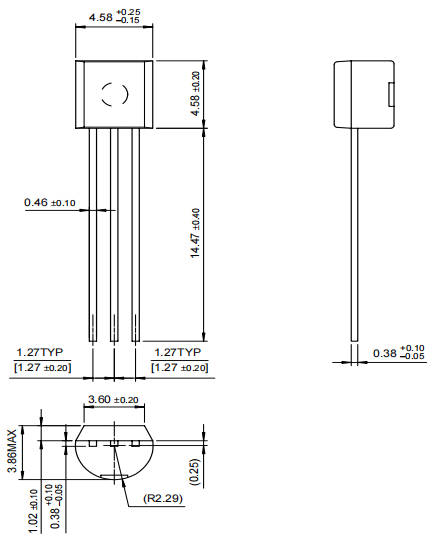
2N3819 Manufacturer
Central Semiconductor is a leading provider of superior discrete semiconductors that have been applied in electronic products all over the world since 1974. Nowadays, the company's products lines contain MOSFETs, bridge rectifiers, silicon carbide devices, protection devices, rectifiers, current limiting diodes, bipolar power transistors, standard, and custom small-signal transistors, and thyristors. Except for the industry-standard surface mount, the company's products also support bare die, MDMs (Multi Discrete Modules™), through-hole packages. With the loyal and high-quality brand image it has built, Central keeps leveraging its service capability and benefit more and more customers through exclusive high-tech products.
Trend Analysis
Datasheet PDF
- ReachStatement :
- Datasheets :
- PCN Assembly/Origin :
- Environmental Information :
Parts with Similar Specs
- ImagePart NumberManufacturerPackage / CaseDrain to Source Voltage (Vdss)Continuous Drain Current (ID)Power DissipationMax Power DissipationGate to Source Voltage (Vgs)Element ConfigurationOperating ModeView Compare
2N3819
TO-226-3, TO-92-3 (TO-226AA)
25 V
20 mA
360 mW
360 mW
25 V
Single
DEPLETION MODE
TO-226-3, TO-92-3 (TO-226AA) (Formed Leads)
-
-
-
310 mW
35 V
Single
DEPLETION MODE
TO-226-3, TO-92-3 (TO-226AA) (Formed Leads)
-
-
-
310 mW
30 V
Single
DEPLETION MODE
TO-226-3, TO-92-3 (TO-226AA)
30 V
25 mA
350 mW
350 mW
30 V
Single
-
TO-226-3, TO-92-3 (TO-226AA)
-
25 mA
625 mW
310 mW
-30 V
Single
DEPLETION MODE
1.What is 2N3819 transistor?
It is an N-channel junction field effect transistor with high frequency and low noise.
2.What other transistors can be used to replace 2N3819?
This is a field effect tube, 25V 20mA N-channel low power. We can use BF244, BF245, MPF102, 2N3822 to instead.
3.How to run 2N3819 safely in a circuit?
It is recommended to always stay 20% below from the max ratings. Does not drive load of more than 10mA through this transistor and the load voltage should be under 25V. Always store and operate it in temperature above -65 Celsius and below +150 Celsius.
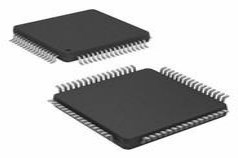 AT90CAN32 Microcontroller: Pinout, Equivalent and Datasheet
AT90CAN32 Microcontroller: Pinout, Equivalent and Datasheet23 February 20221206
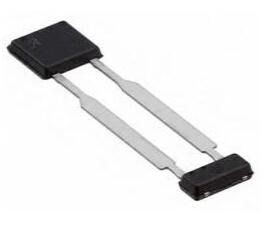 A1688 High Accuracy Sensor IC:Datasheet, Pinout, Features and Benefits
A1688 High Accuracy Sensor IC:Datasheet, Pinout, Features and Benefits03 September 2021644
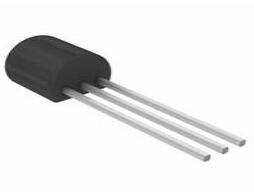 MPSA18 Low Noise Transistor: Datasheet pdf, Pinout and Substitute
MPSA18 Low Noise Transistor: Datasheet pdf, Pinout and Substitute15 November 20212809
 Unveiling the Microchip PIC24HJ32GP302/304 Microcontroller Series: A Technical Deep Dive
Unveiling the Microchip PIC24HJ32GP302/304 Microcontroller Series: A Technical Deep Dive29 February 2024126
 What’s the relationship between CR2032 and CR2016?
What’s the relationship between CR2032 and CR2016?16 June 202211110
 1N5062 Diode: Features, Pinout, and Datasheet
1N5062 Diode: Features, Pinout, and Datasheet18 January 20221825
![BTA12 Triacs: Features, Pinout, and Datasheet [Video&FAQ]](https://res.utmel.com/Images/Article/0e2fa5b3-b023-4f7c-8a16-fb7d7e7972ef.png) BTA12 Triacs: Features, Pinout, and Datasheet [Video&FAQ]
BTA12 Triacs: Features, Pinout, and Datasheet [Video&FAQ]04 December 202113546
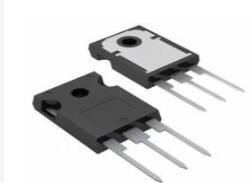 IRFP460 MOSFET: IRFP460 vs.IRFP460A, Pinout and Equivalent
IRFP460 MOSFET: IRFP460 vs.IRFP460A, Pinout and Equivalent28 March 202212711
 Switch-mode Power Supply Basics
Switch-mode Power Supply Basics14 December 20205732
 What is a Decoder?
What is a Decoder?29 November 202116912
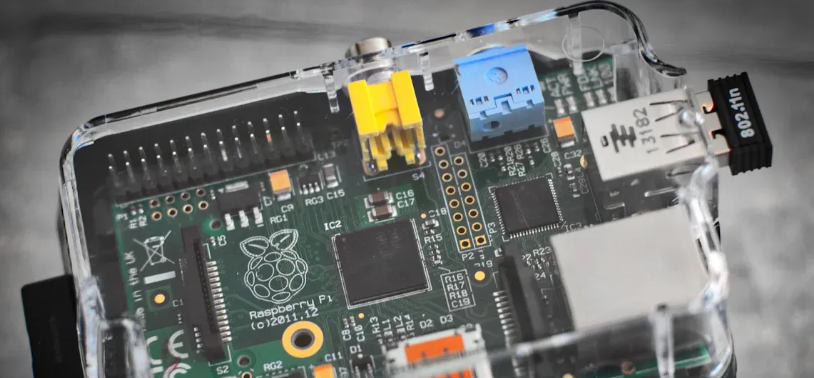 How Embedded Computers Drive Innovation in 2025
How Embedded Computers Drive Innovation in 202517 July 2025489
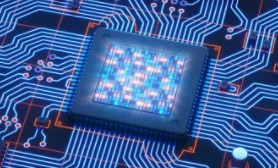 What are the Applications of Filters?
What are the Applications of Filters?23 October 202114307
 What is a PIN Diode?
What is a PIN Diode?04 February 20218790
 Switching Diodes Basics: Working, Types and Circuit Analysis
Switching Diodes Basics: Working, Types and Circuit Analysis24 October 202539961
 Photocoupler Basis: Description, Applications and Working Principle
Photocoupler Basis: Description, Applications and Working Principle29 September 20218461
 Lithium-ion Battery: Structure, Working Principle and Package
Lithium-ion Battery: Structure, Working Principle and Package08 November 202524480
Central Semiconductor Corp
In Stock: 2237
United States
China
Canada
Japan
Russia
Germany
United Kingdom
Singapore
Italy
Hong Kong(China)
Taiwan(China)
France
Korea
Mexico
Netherlands
Malaysia
Austria
Spain
Switzerland
Poland
Thailand
Vietnam
India
United Arab Emirates
Afghanistan
Åland Islands
Albania
Algeria
American Samoa
Andorra
Angola
Anguilla
Antigua & Barbuda
Argentina
Armenia
Aruba
Australia
Azerbaijan
Bahamas
Bahrain
Bangladesh
Barbados
Belarus
Belgium
Belize
Benin
Bermuda
Bhutan
Bolivia
Bonaire, Sint Eustatius and Saba
Bosnia & Herzegovina
Botswana
Brazil
British Indian Ocean Territory
British Virgin Islands
Brunei
Bulgaria
Burkina Faso
Burundi
Cabo Verde
Cambodia
Cameroon
Cayman Islands
Central African Republic
Chad
Chile
Christmas Island
Cocos (Keeling) Islands
Colombia
Comoros
Congo
Congo (DRC)
Cook Islands
Costa Rica
Côte d’Ivoire
Croatia
Cuba
Curaçao
Cyprus
Czechia
Denmark
Djibouti
Dominica
Dominican Republic
Ecuador
Egypt
El Salvador
Equatorial Guinea
Eritrea
Estonia
Eswatini
Ethiopia
Falkland Islands
Faroe Islands
Fiji
Finland
French Guiana
French Polynesia
Gabon
Gambia
Georgia
Ghana
Gibraltar
Greece
Greenland
Grenada
Guadeloupe
Guam
Guatemala
Guernsey
Guinea
Guinea-Bissau
Guyana
Haiti
Honduras
Hungary
Iceland
Indonesia
Iran
Iraq
Ireland
Isle of Man
Israel
Jamaica
Jersey
Jordan
Kazakhstan
Kenya
Kiribati
Kosovo
Kuwait
Kyrgyzstan
Laos
Latvia
Lebanon
Lesotho
Liberia
Libya
Liechtenstein
Lithuania
Luxembourg
Macao(China)
Madagascar
Malawi
Maldives
Mali
Malta
Marshall Islands
Martinique
Mauritania
Mauritius
Mayotte
Micronesia
Moldova
Monaco
Mongolia
Montenegro
Montserrat
Morocco
Mozambique
Myanmar
Namibia
Nauru
Nepal
New Caledonia
New Zealand
Nicaragua
Niger
Nigeria
Niue
Norfolk Island
North Korea
North Macedonia
Northern Mariana Islands
Norway
Oman
Pakistan
Palau
Palestinian Authority
Panama
Papua New Guinea
Paraguay
Peru
Philippines
Pitcairn Islands
Portugal
Puerto Rico
Qatar
Réunion
Romania
Rwanda
Samoa
San Marino
São Tomé & Príncipe
Saudi Arabia
Senegal
Serbia
Seychelles
Sierra Leone
Sint Maarten
Slovakia
Slovenia
Solomon Islands
Somalia
South Africa
South Sudan
Sri Lanka
St Helena, Ascension, Tristan da Cunha
St. Barthélemy
St. Kitts & Nevis
St. Lucia
St. Martin
St. Pierre & Miquelon
St. Vincent & Grenadines
Sudan
Suriname
Svalbard & Jan Mayen
Sweden
Syria
Tajikistan
Tanzania
Timor-Leste
Togo
Tokelau
Tonga
Trinidad & Tobago
Tunisia
Turkey
Turkmenistan
Turks & Caicos Islands
Tuvalu
U.S. Outlying Islands
U.S. Virgin Islands
Uganda
Ukraine
Uruguay
Uzbekistan
Vanuatu
Vatican City
Venezuela
Wallis & Futuna
Yemen
Zambia
Zimbabwe












